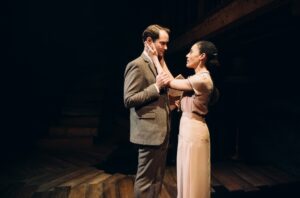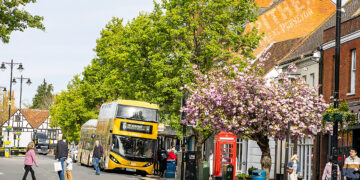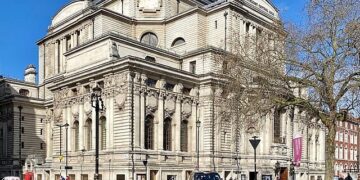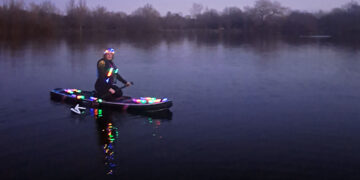Can a story designed as a film work equally well on the stage?
You’ll likely know David Seidler’s “The King’s Speech” as a 2010 film, starring Colin Firth as King George VI (or Bertie, pre-coronation) and Geoffrey Rush as the Australian speech therapist Lionel Logue, who helped the King overcome his stammer.
What you may not know is that Seidler originally envisaged the story as a stage play in the 1970s; but was asked by the Queen Mother to hold off on telling it until after her death.
With the passage of time, the story manifested as the film we know and love – and it was only following the film’s success that Seidler felt encouraged to bring the story to the stage as he originally intended.
But how does it compare?

The story largely follows that of the film. The King (Peter Sandys-Clarke)’s battle with his stammer takes place against the backdrop of the constitutional crisis surrounding Edward VIII (Stephen Rahman-Hughes)’s relationship with Wallis Simpson (Rosa Hesmondhalgh).
The political and cultural whirlpool of Edward VIII’s abdication is captured in the perspectives of Stanley Baldwin (Rahman-Hughes), Winston Churchill (Jim Kitson, also playing King George V) and the Archbishop of Canterbury Cosmo Lang (Christopher Naylor).
But in lieu of the film’s harsh, bright lights and its sweeping shots of Royal British landmarks – the stage play is dark and confined, representing a more symbolic take on the story.

The action is set largely in Logue (Arthur Hughes)’s home and office, the sparse set and low lighting forcing attention on to the characters. And it’s these scenes that really resonate – stripped of distraction, both we and Bertie are forced to confront the traumas that led to his stutter.
The chemistry between Hughes and Sandys-Clarke is tremendous here, a wonderful push-and-pull of suspicion, encouragement and respect. In the absence of the film’s grandeur, it’s much easier to appreciate how isolated both men were, and their friendship shines brighter as a result.

When the action shifts to the palace and political quarters, the set is a maze of gaslit wood panelling. While these scenes lack the visual scope of the film, they effectively capture the secretive plotting and turmoil of this tumultuous time. The seat of Edward the Confessor features prominently in the background, a stark reminder of the fate (and continual need to address the nation) awaiting Bertie – counterbalanced by the strong and supportive figure of Bertie’s wife Elizabeth (Aamira Challenger).
The story is, at its core, about the scars we inherit from our traumas – and the healing power of positive relationships and self-confidence. The beautiful acting, atmospheric set design and masterful direction allows the stage play to deliver this story in a more heartfelt manner than the film – a triumph over its cinematic predecessor.
“The King’s Speech” runs from the 20th September to the 2nd November; tickets are available at https://www.watermill.org.uk.









































